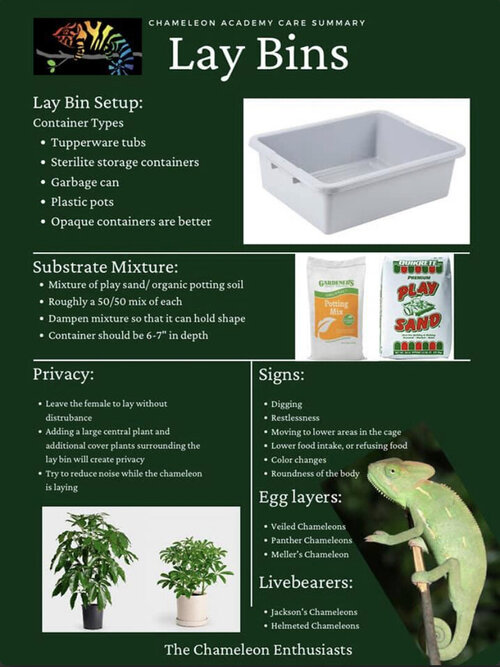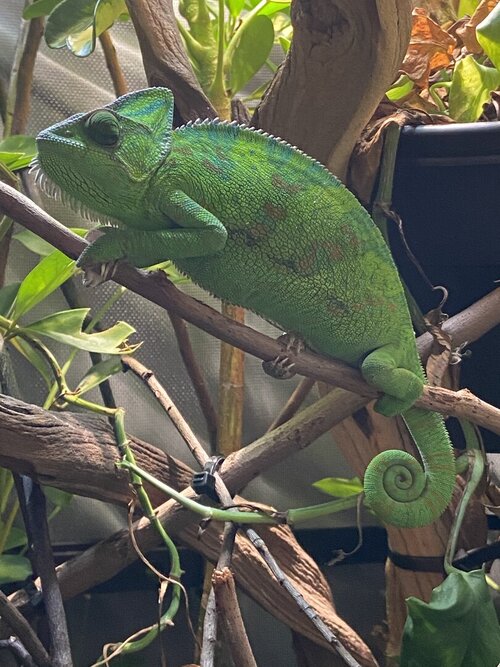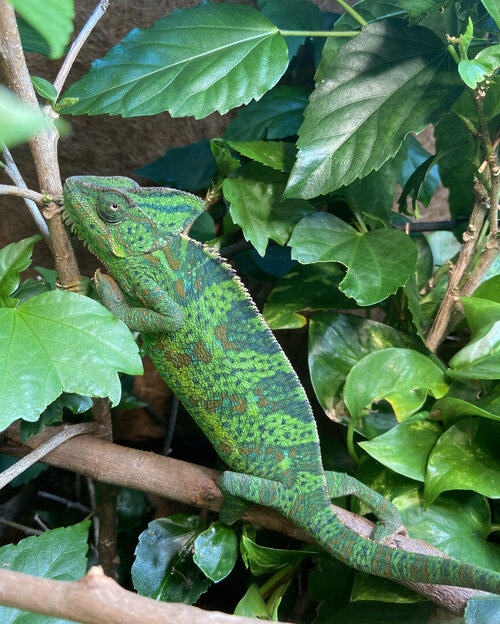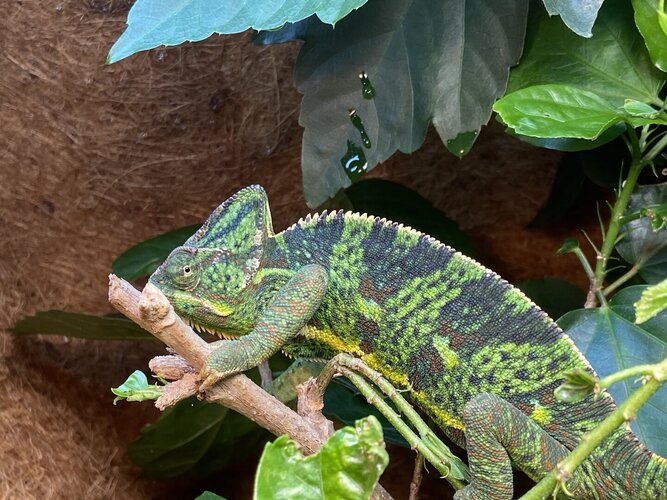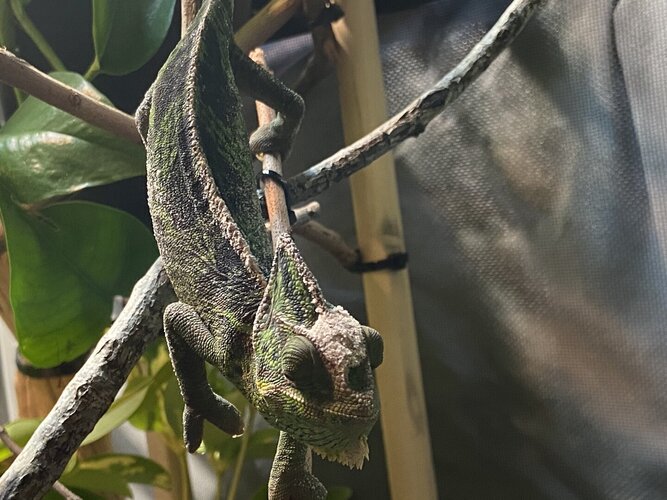kam!
New Member
I got this Veiled Chameleon girl on Sunday at Repticon. I noticed the day after that there are black spots on her nose. And I checked again tonight and they seem to be darker and bigger? I do not know if these are scabs from the bag or screen cage. Or if this is a more concerning problem.
Right now, I have fed her 3 hornworms and 8 dusted crickets with multivitamins and calcium. I will feed her again with calcium dusted and gutloaded crickets and dubia roaches on Thursday. She ate what I have given her recent and has even pooped (good progress??) I mist her cage twice a day and make sure water drops and have seen her drink multiple times.
For her enclosure, its not much but enough for her to hide and climb around. She has 5 big vine leaves, 2 on the right side, one on the left, and 2 on the back. She had hid at the top of the leaves and behind. She has a vine that leads from the top and the bottom.
Her lights are a 5.0 UVB light and a 60 W Daylight Blue bulb, might up the wattage as the temperature only reads around 75-79° near her basking area (should I leave it be?) Lights on at 7 am, Lights off at 7 pm. She sleeps and is awake during the day.
I will answer any questions. I want to know what is wrong with her and how I can help her in any way.
Right now, I have fed her 3 hornworms and 8 dusted crickets with multivitamins and calcium. I will feed her again with calcium dusted and gutloaded crickets and dubia roaches on Thursday. She ate what I have given her recent and has even pooped (good progress??) I mist her cage twice a day and make sure water drops and have seen her drink multiple times.
For her enclosure, its not much but enough for her to hide and climb around. She has 5 big vine leaves, 2 on the right side, one on the left, and 2 on the back. She had hid at the top of the leaves and behind. She has a vine that leads from the top and the bottom.
Her lights are a 5.0 UVB light and a 60 W Daylight Blue bulb, might up the wattage as the temperature only reads around 75-79° near her basking area (should I leave it be?) Lights on at 7 am, Lights off at 7 pm. She sleeps and is awake during the day.
I will answer any questions. I want to know what is wrong with her and how I can help her in any way.
Attachments
-
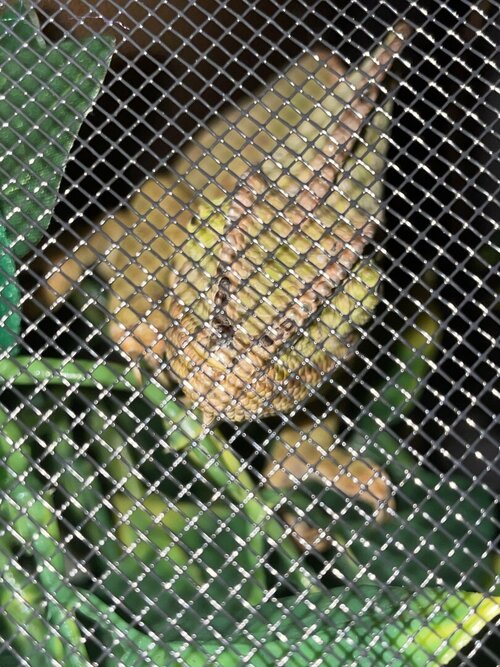 F04009AA-45A2-45C7-A26A-4097E768414C.jpeg246.9 KB · Views: 153
F04009AA-45A2-45C7-A26A-4097E768414C.jpeg246.9 KB · Views: 153 -
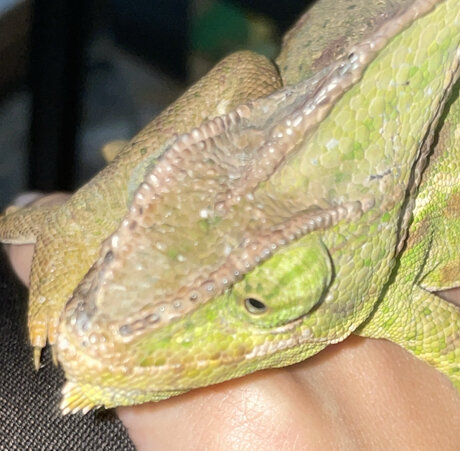 AEDF7AC8-CBF9-4C83-BC8D-D14D1D6FE055.jpeg270.5 KB · Views: 150
AEDF7AC8-CBF9-4C83-BC8D-D14D1D6FE055.jpeg270.5 KB · Views: 150 -
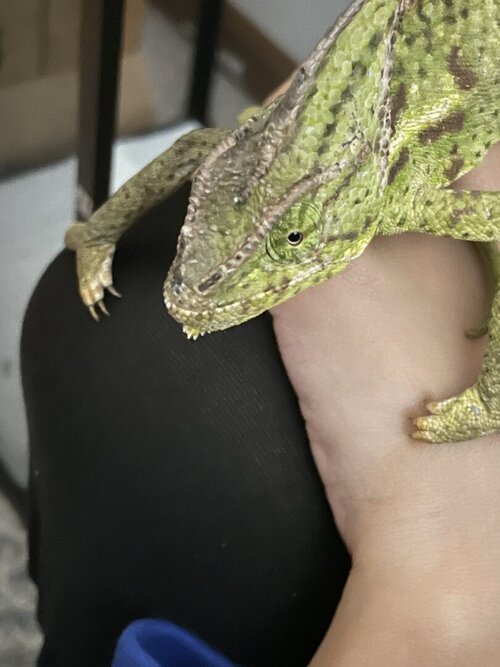 CEF04973-3984-4066-B96E-4222A8C5506C.jpeg136.7 KB · Views: 143
CEF04973-3984-4066-B96E-4222A8C5506C.jpeg136.7 KB · Views: 143 -
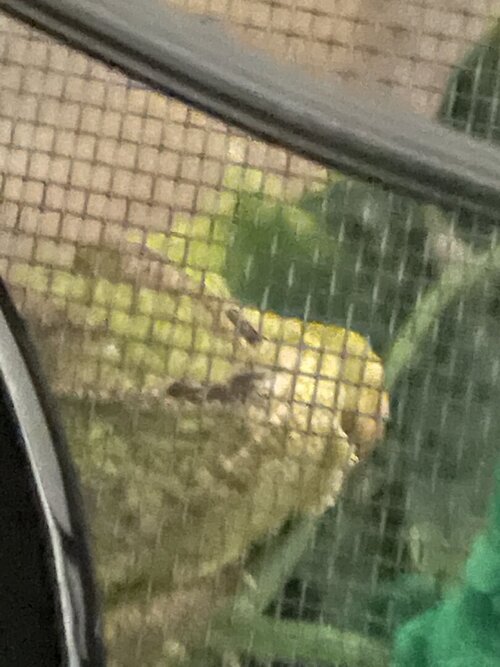 CBA468AD-A8CE-4929-825C-2BEF19330265.jpeg130.2 KB · Views: 150
CBA468AD-A8CE-4929-825C-2BEF19330265.jpeg130.2 KB · Views: 150 -
 279FC130-2350-473A-8467-0A9D2DA2C601.jpeg219.7 KB · Views: 153
279FC130-2350-473A-8467-0A9D2DA2C601.jpeg219.7 KB · Views: 153 -
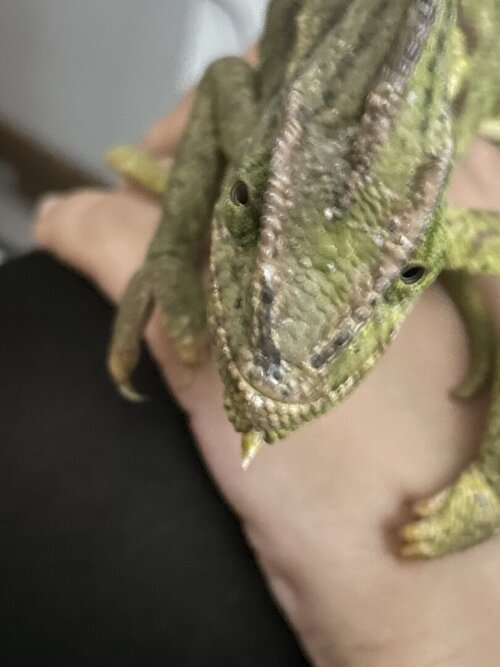 2F89A105-1F44-422B-AEBB-DC878186743F.jpeg109 KB · Views: 141
2F89A105-1F44-422B-AEBB-DC878186743F.jpeg109 KB · Views: 141





